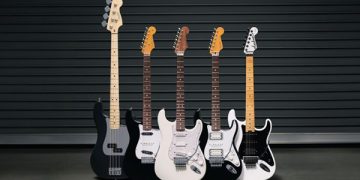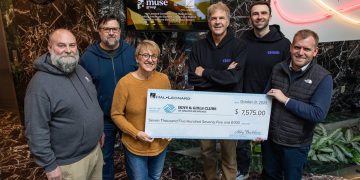 As a former band director, campus administrator, and director of performing and visual arts for the Spring Independent School District (Houston, TX) I have been involved in quite a bit of purchasing during my 31-year career in the district. As the educational support manager for Conn-Selmer, my responsibility is to help “connect the dots” between educators and dealers in order to facilitate a purchase. At trade shows such as NAMM, the sales focus seems to be on manufacturers and dealers, not necessarily educators. NAMM does a great job with Music Education Days, and I’m grateful to have been a part of that for a number of years. However, do educators have a place on the show floor – meaning are manufacturers paying attention to them, too? I certainly don’t see this as a failure on the part of NAMM to include educators, but rather just the normal progression of how things have been.
As a former band director, campus administrator, and director of performing and visual arts for the Spring Independent School District (Houston, TX) I have been involved in quite a bit of purchasing during my 31-year career in the district. As the educational support manager for Conn-Selmer, my responsibility is to help “connect the dots” between educators and dealers in order to facilitate a purchase. At trade shows such as NAMM, the sales focus seems to be on manufacturers and dealers, not necessarily educators. NAMM does a great job with Music Education Days, and I’m grateful to have been a part of that for a number of years. However, do educators have a place on the show floor – meaning are manufacturers paying attention to them, too? I certainly don’t see this as a failure on the part of NAMM to include educators, but rather just the normal progression of how things have been.
Working for Conn-Selmer as an educational support manager has put me on the front lines with educators, and it’s music directors who are really driving much of what manufacturers are producing outside of professional players’ needs and, in turn, what dealers are ordering. For example, if a band director who teaches beginning band students suggests, requests, or even requires a student to play a particular brand and model of instrument, then when parents go to their local music dealer, they will be requesting that instrument. In order to stock those instruments, the dealer will need to place an order with the manufacturer, and that completes what I like to refer to as “the chain of influence.”
Just this year, school districts across the country have purchased millions of dollars of band and orchestra instruments due to the funds made available by the federal government. The Elementary and Secondary Emergency Relief funds (ESSER) has allowed districts to purchase like they never have before. Originally intended specifically for COVID remediation, learning loss, et cetera, the requirements have become less stringent to the point that the ESSER language specifically states that these funds “may be used to purchase musical instruments.” I have personally been involved in facilitating multi-million dollar purchases by school districts, and these purchases are being driven and influenced by the directors in the schools. Again, the chain of influence starts with the music teacher.
So, what can be done to get educators more involved in the entire process? Manufacturers and dealers need to work together and actively involve educators in conversations about new products and improving current products. I’ve told directors a number of times when trying a new instrument, “Tell me what you think, not what you think I want to hear.” We will only get better if we have open mind to the needs of the end user. Now… we certainly can’t make custom instruments for everyone that wants some special tweak or special feature, but if the majority of customers are requesting the same thing, it should be given strong consideration.
Shows like NAMM are a great resource for connecting manufactures, dealers, and educators. There are literally thousands of educators that attend NAMM’s Music Education Days and the NAMM Show every year. This year, events like Million More Music Makers will be even another opportunity to band together and expand the market for music learning. However, many educators that are walking the show floor are typically just “taking it all in” and still may not feel comfortable interacting with manufacturers. Let’s welcome educators on the show floor so that these three groups can work hand in hand to meet the needs of schools and students.
Rick Ghinelli worked in the Spring Independent School District (Houston, TX) for 31 years as band director, an elementary and middle school assistant principal, and a middle school principal. He completed his last 13 years prior to retiring as the director of performing and visual arts. He currently is the director of music administration outreach and the educational support manager – Southwest, for Conn-Selmer, Inc.



























Looking Back on 2025: A Year of Controlled Chaos (Emphasis on “Controlled”)